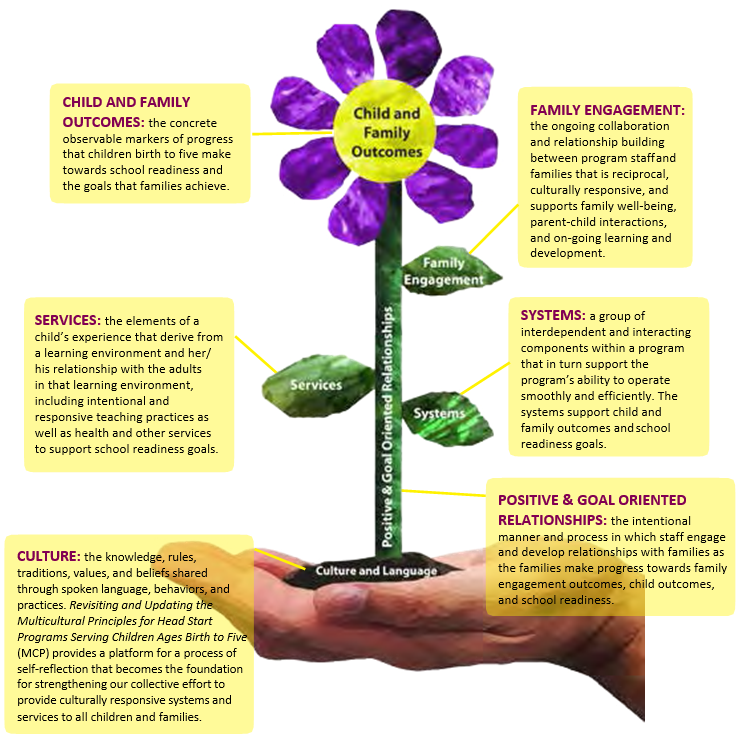86 16.5: The Culturally Responsive Lens
You can also use the Culturally Responsive Strength-Based (CRSB) Framework, which is used by Head Start, to address diversity. This framework presents the big picture and identifies the program pieces that support the growth and development of all children.

Figure 16.3: The elements of the CRSB Framework. [265]
Coupled with a culturally responsive approach, the CRSB Framework is a strength-based approach. The focus is on what children know and can do as opposed to what they cannot do or what they do not know. Cultural, family, and individual strengths are emphasized, not just the negative and proposed interventions to “fix the problem” that resides with the children, their families, and/or their communities.
|
|
The strengths approach has a contagious quality and it intuitively makes sense to those who reflect a “cup half full” attitude in life. — Hamilton & Zimmerman, 2012 If we ask people to look for deficits, they will usually find them, and their view of the situation will be colored by this. If we ask people to look for successes, they will usually find it, and their view of the situation will be colored by this. — Kral, 1989 (as cited in Hamilton & Zimmerman, 2012) [266] |
The CRSB Framework should be used with the understanding that children are influenced by many environments, as represented in a bioecological systems model. A bioecological systems model captures the variety of environments that impact individual development over the course of a lifetime. Young children do not live in a vacuum, but co-exist in many environments that affect their development, starting with the family, extending into the community, and reaching out into the economic and political spheres.
|
|
Think About It… There is also privilege surrounding socioeconomic status. How does the following excerpt change your perspective on future and current goals of children with different socioeconomic statuses? How will you as a teacher think about this? A study done by Dumais (2005) found that:
56% of parents from the lowest SES expected their children will get a bachelor’s degree, while 95% of those from the highest SES expected the same [267] |



